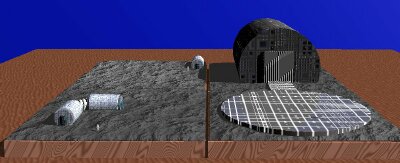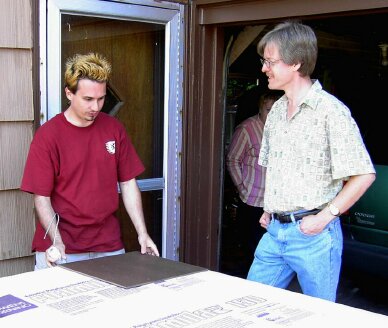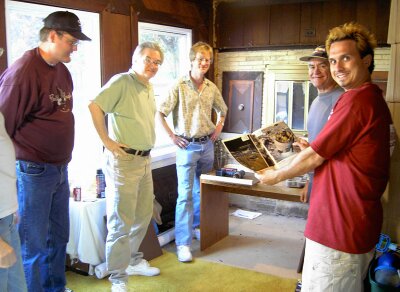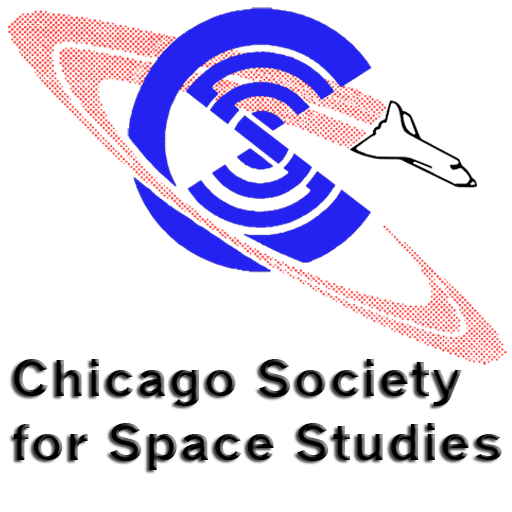(Note: The CSSS Moon Base Armstrong project was cancelled after the loss of key personnel. This page is retained for reference purposes)
Table of Contents
| Statement of Purpose | |
| Moon Base Armstrong Components | |
| Supporting Educational Materials | |
| Technical Details for Model Construction | |
| Lunar Location for the Moon Base | |
| School Participation | |
| Picture Gallery |
Statement of Purpose
The purpose of the CSSS Moon Base Armstrong Project is to use an expandable model moon base, designated Armstrong, as a tool for educating, informing, and entertaining the public, irregardless of age.
As a tool for education, Armstrong will serve in multiple roles. In it’s simplest role, Armstrong will serve as a visual aid at both outreach events and presentations. For younger audiences and grade school groups, radio-controlled lunar buggies will be used to allow children to interact with the base. Tasks can be assigned, with such tasks navigation decision making and ordering by priority. For junior high and high school classes, the emphasis will be on group construction projects wherein the group both creates additional modules for the base while justifying their decision on technical grounds.
As an informational tool, Armstrong will serve as an exhibit for public displays. Included will be instructional placards that explain the function and operation of the different components.
As a tool for entertainment, Armstrong will feature as an additional component radio controlled lunar rovers. Children will be encouraged to explore the surface of the Moon while avoiding hazards.
Public details, images, and exhibit schedule will be made available on the CSSS Web site at http://www.chicagospace.org.
Moon Base Armstrong Components
For purposes of this project, components of a moon base will be grouped into the categories of habitability, mobility, power generation, scientific, and production.
It should be noted that many of these components can be commercial enterprises that represent private sector investments.
Example Components by Category
| Transportation: | Landing Pad Vehicle Garage Fuel Depot Navigation Beacons Mass Driver |
| Power Generation: | Solar Arrays Battery Storage Nuclear Reactor Power Distribution Network |
| Scientific: | Astronomy Facilities Geology Lab NEO Detection Facilities |
| Habitability: | Habitats Greenhouses Storage Tanks for Water, O2, N2 Water Recycling Plant Medical Facility Recreation Center Waste Management |
| Production: | Regolith Processing Plant Storage Facilities Solar Array Factory 3He Production Plant for Earth’s Fusion Reactors Lunar Solar Power Pilot Plant O2 Extraction H2O Ice Extraction |
| Miscellaneous: | Communications Tower |
| Commercial Enterprise | Any of the above components could be a commercial endeavor. |
Supporting Educational Materials
In support of Moon Base Armstrong, the CSSS will develop a variety of educational handouts and display placards whose purpose will be to explain the benefits of a moon base to humanity, the various functions of a moon base, and the role of the base’s individual components. Consideration should be given to the production of more detailed reference materials and supporting educational presentations for the public.
For all materials associated with this project, the Metric System will be the system of measurement used.
Technical Details for Model Construction
Moon Base Armstrong will be constructed to 1:87 scale (HO gauge). To facilitate transportation and flexibility, the base will be constructed in multiple modular segments with each segment measuring 45.72 centimeters square.
The following table provides scaling information for various aspects of Moon Base Armstrong.
| Component | True Size in Meters |
Size in Model in centimeters |
| Lunar Surface Unit | 53.04 | 60.96 |
| Man Height | 1.83 | 2.10 |
| Apollo LEM height | 6.71 | 7.71 |
| Apollo LEM diagonal | 9.45 | 10.86 |
| ISS US LAB diameter | 5.79 | 6.66 |
| ISS US LAB length | 8.99 | 10.34 |
| Landing Pad diam | 45.72 | 52.55 |
| VAT length | 45.72 | 52.55 |
| VAT diam | 32.92 | 37.84 |
Some items for consideration in the layout and design of the initial moon base components are:
- To create a unified/connected look between the separate modules, we may want to create a flexible piping system that would ostensibly be used to convey liquids, gases, electrical lines, etc, between structures on different surface units.
- Identify a way to minimize the presence of the seams between the individual surface units.
- For some structures, we would want to locate them inside a small crater and backfill the wall gap with regolith.
- Some structures should be buried to illustrate the protection properties of the lunar regolith from radiation, meteorites, and thermal extremes.
- Consider connecting high traffic structures by tunnels to minimize airlock activity. While this may be tricky to incorporate from a modeling perspective, it may be easier if said structures are partially buried.
- Inclusion of facilities for the processing of lunar resources to maximize self-support should be a requirement.
- Inclusion of facilities for the mining and processing of lunar resources to minimize expendable dependencies, namely O2, H2O, and food stuffs, should be a requirement.
Lunar Location for the Moon Base
To enhance the realistic nature of Moon Base Armstrong, we will associate our base with a specific location on the Moon near the south pole. The primary issues with respect to siting were:
- maximum availability of sunlight for solar power generation
- local availability of water ice deposits
School Participation
With respect to the participation of schools in the moon base project, CSSS should explore two avenues of participation. For grade schools, the moon base can be used as a visual tool to explain the numerous concepts involved with the construction and habitability of a base on the moon. Additionally, though the use of radio controlled vehicles, children can be assigned specific missions to be completed, either individually or as a team.
With respect to junior high and high schools, CSSS can offer classes the opportunity to participate in the construction of the moon base. This participation could include one or more of the following:
- Individual lunar habitat module
- Lunar Infrastructure Facility
- Lunar transport vehicle(s)
- A surface segment, either undeveloped or developed
The benefit to the classes would be the associated research and teamwork involved in completing a novel task. In addition to the model component, the team would be expected to provide a write-up of their contributed facility. This could be set up as a competition between classes or between schools.
Restrictions/Guidelines
Those classes choosing to participate in the construction of the lunar base will need to adhere to a number of guidelines:
- All elements must be built to the specified 1:87 scale
- Lunar surface module must meet size, surface, connectivity standards so it can be connected to the other modules
- All elements must be constructed of approved materials
- Supporting documentation must be created to describe what it is that has been built and why it should be a part of Moon Base Armstrong
- Only battery-powered electrical devices will be permitted.
- The lunar surface must be painted using a particular, specified paint, to avoid a patchwork-pattern look.
CSSS should supply to any schools participating in the construction program:
- Information on the base’s site and why it was chosen
- Information on the necessary components of a lunar base
- Color illustrations of different moon base concepts
- Some basic numbers as to sizing of various elements, like solar arrays, habitats, etc.
The opportunity to have separate schools or classes compete in the construction and justification of different moon base elements should be explored.
Picture Gallery
Image 1: Concept Image of Moon Base Armstrong segments.

Image 2: CSSS President Bob Jeske and Moon Base Armstrong Project Manager Owen Bassett at work

Image 3: The moon base construction team in action.

